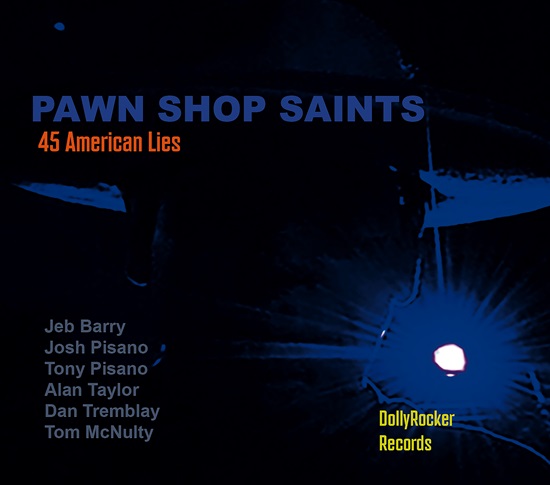
I may have mentioned that I love a challenge, but here’s one that I wasn’t expecting. I’ve never reviewed a triple album (bought a few in the vinyl era). Before The Clash released ‘Sandinista!’, the triple album was mainly a prog phenomenon with bands like Yes and Emerson, Lake and Palmer using the format for extended instrumental workouts. The Clash brought it all back to basics with a classic six songs per side over six sides. Jeb Barry’s Pawn Shop Saints have taken the Clash’s value for money concept even further with fifteen tracks per album – the maths is easy, it’s forty-five songs. Sensibly enough, it’s a digital-only release to download or stream.
The project started just after 2023’s ‘Weeds’ album was completed and pulls together songs that were written over a period of twenty years or so. ’45 American Lies’ is a bit of a tidy-up operation; you have a stack of forty-five songs that you’ve gathered over the years that didn’t quite fit in on any previous albums but you think they have value so why not record them and get them all out there at the same time. The recording process was all about getting the songs recorded with a maximum of speed and a minimum of studio trickery. There’s a lot of material here and the common factors are Jeb Barry’s classic songwriting and his high lonesome voice. He’s not expecting everyone to like every song on the album (do you know anyone who likes every song on ‘Sandinista!’?), but he’s quite happy if you dip in and find a couple that you like from the smorgasbord on offer.
For what it’s worth, my favourites after a couple of listens (and that could easily change after another listen) are ‘Liverpool’, a story of everyday male sexual jealousy, ‘Cottonwood’ and ‘Repo Man’ on the familiar Jeb Barry theme of the destruction of rural communities and ‘Heading to Parchman’, the story of a doomed relationship that culminates in twenty to life in Mississippi State Penitentiary, which has a rich history in popular song, including Hannah Aldridge’s 2014 classic, ‘Parchman’.
It’s a bit of a long shift listening to the whole piece, but if you like quality Americana, then you’ll find something for you in this collection.
’45 American Lies’ is out now on Dollyrocker Records.
Here’s an acoustic video of ‘Cottonwood’:
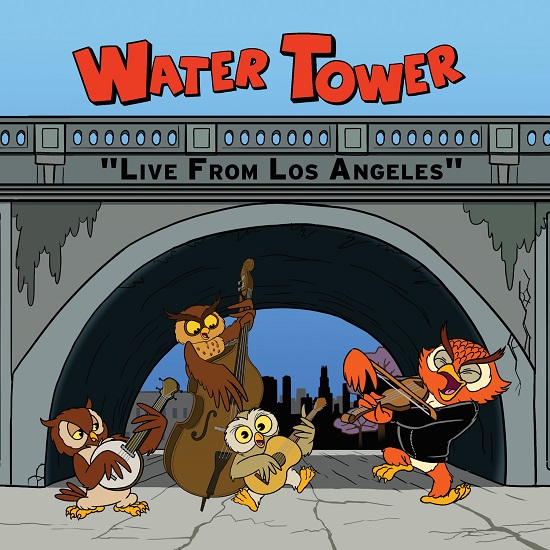
So, no pressure then. Palomino Studios in LA was booked by Water Tower for the day after a two-month tour while the tour energy was still fresh and everything would be recorded live in one day. It was traditionally the way string bands recorded; get everyone around a mic and the volume adjustment is done by moving away from or closer to it. Should have been relatively easy until the car broke down and the upright bass fell apart cutting four hours out of their session time. And they only managed to limit the songs to fifteen (or sixteen if you split out the opening segue). No pressure at all but, for performing musicians shit like this happens day in and day out. I’ll come back to that later.
I like the idea of the traditional string band; musicians who play and sing to a really high standard in a live or studio setting while keeping an Appalachian tradition alive. But things also move on and Water Tower do a couple of things that help keep the style fresh; they approach it with a sense of humour (not untypical in string bands) and they happily throw in influences from other musical styles and not always what you might expect; how about the percussive acoustic guitar-led cover of Tupac’s ‘California Love’? The link is the location, but I certainly wouldn’t have seen that one coming.
The album opens with a solo banjo version of ‘The Star-Spangled Banner’ (no Hendrix pyrotechnics, just tight, technical playing featuring some nice double-stopped passages) which leads into a cover of Doc Watson’s ‘Reuben’s Train’ showcasing the talents of all the players. The traditional string band tunes that give all the players the chance to improvise and show their abilities form the backbone of the album; ‘I See the Light’ is a slow triple-time piece with a high-register Kenny Feinstein vocal and intertwining banjos, ‘Lonesome Blues’ rattles along with instrumental virtuosity and superb harmonies and ‘Stay the Night’ flies along at breakneck speed hinting at the pace of the recording process, particularly in the spoken outro. And there’s a version of ‘Cotton Eyed Joe’ (yep, the same one that Swedish band Rednex covered when the UK rave scene finally jumped the shark).
These tunes are all great fun but the album becomes really distinctive when the influences that the induvial band members bring feed into the songs. ‘Radio’ is punk Americana with a couple of Clash references, ‘George Washington’ highlights our mortality and transience while taking a sideswipe at internet conspiracy theories and ‘Skante Warrior’ digs into the dark world of meth-heads which is contrasted with the gorgeous falsetto Beach Boys/Four Seasons harmonies. And then ‘AM PM’, with a Jackson Browne/David Lindley feel is a very rare thing indeed, a song about supermarket price offers.
Coming back to the recording process, everything was recorded live in two takes for each song and it’s mainly the first takes that feature on the album. There are three things about this album that grabbed my attention; the playing and singing are outstanding, it feels like the band are having fun and it made me explore a concept that I had no knowledge of (the urban mythology of meth-heads explored in ‘Skante Warrior’). Enjoyment and instruction.
‘Live from Los Angeles’ is a great capture of the live energy of Water Tower and it’s released in the UK on Friday August 11th. If you want to capture the real thing in the UK, Water Tower will be touring the UK and Ireland from August 10th. You can find the dates here.
As an extra bonus, here’s a live video of ‘Take Me Back’:
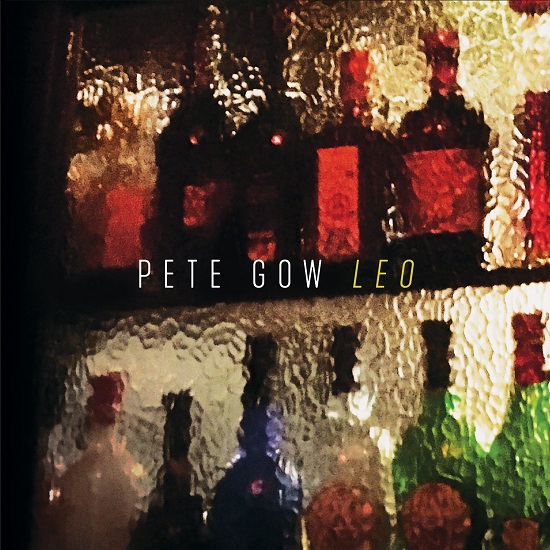
‘Leo’ is the third instalment in the ongoing collaboration between songwriter Pete Gow and multi-instrumentalist Joe Bennett. The previous two albums ‘Here There’s No Sirens’ and ‘The Fragile Line’ have a signature sound that features Joe’s string arrangements; on this album, he’s moved further back into the orchestra to add some horns to the mix, creating a wider palette and a much punchier sound to frame Pete’s (mostly) personal songs. The songs are given a widescreen treatment that nods in the direction of “Born to Run”-era Springsteen, but there are a few other comparisons that maybe aren’t so obvious.
In 1978, a Scottish songwriter living in London released an album featuring a few songs about working in the music business and the characters touching it at tangents that you meet in bars and clubs. ‘City to City’ was a classic Gerry Rafferty album, marrying classic songwriting with interesting arrangements and “Where Would We Be Going” is in the same mould, creating perfect settings for the emotional tug of Pete’s soulful vocals.
The album’s eight songs (‘Where Else Would Be Going?’ tops and tails the album in an upbeat and then a more reflective version) all reward repeated listens. There’s a lot to recommend and to write about every song, but I’ll concentrate on three that cover most of the bases.
‘Side III of London Calling’ is a seedy story of a musician trying to get wired and laid after the gig’s over, set against a mid-tempo groove that nods in the direction of The E Street Band. It’s authentic and gritty and compares the perfection of the woman being pursued to, guess what, ‘Side III of London Calling’. The lyrics keep your attention as wait to hear the outcome and the tune is an absolute earworm. There’s a hint of Elvis Costello/Sam & Dave with a falling down reference and a classic turnaround in the final chorus when the central character describes himself as “just about as welcome as Side V of Sandinista”. It’s great fun.
‘Leonard’s Bar’ is another beast entirely; it’s the centrepiece of the album, it clocks in at over seven minutes and it’s not autobiographical unless Pete has a secret career as an armed robber that he’s not telling us about. It’s difficult to resist the comparison with The Boss’s ‘Meeting Across the River’ as the story unwinds of the career petty criminal coaxed into one last job. The song weaves its way through tempo changes as it builds to the heist section before closing out with The Leo Horns.
‘The City is a Symphony’ is a Joe Bennett co-write that uses the full dynamic range offered by a rock band plus horns and strings as a setting for a lyric that intertwines the pathos of the present with a flashback to a time with a former lover. Joe’s arrangement blends all of the instrumental elements perfectly to create a symphony in miniature that blends seamlessly into the final song, the reflective version of ‘Where Else Would We Be Going?’.
‘Leo’ is a marvellous combination of the important elements of songwriting and production, pulling in ideas from all over the place, including musical references from The Clash to Clapton to create an album with earworms aplenty and a wide range of musical textures that emphasise the power of the lyrics. I’ve not reviewed a better album this year.
‘Leo’ is released on Friday April 22nd on Clubhouse Records.
Here’s the album’s opening single ‘Where Else Would We Be Going?’:
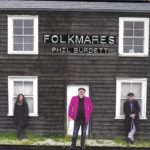 Phil Burdett; the eternal iconoclast. The most characteristic line of the album for me is ‘antagonize a purist’ from the album’s closing song “Newport Electrics”. The song, and the message, are built around Dylan’s infamous electric performance at the Newport Folk Festival in 1965, although the intro hints at the Hendrix performance of “The Star-Spangled Banner”. It doesn’t actually typify the album; it’s twice as long as most of the songs and three times longer than some and it has a psychedelic, hippy-trippy vibe with Indian percussion and hints of Ravi Shankar’s influence. You can fill your boots checking out the Dylan references, but there’s more buried there in the story of how music constantly evolves in the line ‘the strummer’s fix is in’ – is it the frontman of The Clash or a general reference to three chords and the truth guitar players? You decide.
Phil Burdett; the eternal iconoclast. The most characteristic line of the album for me is ‘antagonize a purist’ from the album’s closing song “Newport Electrics”. The song, and the message, are built around Dylan’s infamous electric performance at the Newport Folk Festival in 1965, although the intro hints at the Hendrix performance of “The Star-Spangled Banner”. It doesn’t actually typify the album; it’s twice as long as most of the songs and three times longer than some and it has a psychedelic, hippy-trippy vibe with Indian percussion and hints of Ravi Shankar’s influence. You can fill your boots checking out the Dylan references, but there’s more buried there in the story of how music constantly evolves in the line ‘the strummer’s fix is in’ – is it the frontman of The Clash or a general reference to three chords and the truth guitar players? You decide.
As always with Phil Burdett albums, you can spend all the time you have unpicking the words and looking for the references. I’m not doing it for you, but I’m just saying it might be worthwhile. Phil will argue that lyrics aren’t poetry because they rely on the music to make them work, but let’s just say they’re written in a poetic style. We can probably agree on that.
“Folkmares” came out of a difficult time for Phil; he has a work ethic that won’t allow him to stop. If he can’t write songs, he’ll paint or write poems or find some other way of creating art. What’s certain is that it won’t be boring or bland: guaranteed.
It’s a home studio recording with Phil singing, playing guitars, keys, bass, percussion and harmonica, while Steve Stott (fiddle and mandolin) and Colleen McCarthy (vocals) supply the folkier elements and a more country, string band sound. Phil’s influences are many and varied and most of them poke their heads over the parapet at some point in the album’s fifteen (yep, fifteen) songs. It’s a nod to the folk tradition that almost a third of the songs on the album are in 3/4 time, and those are some of the most poignant songs. I bet you want to know what some of the songs are about as well.
The album looks back to an earlier time in Phil’s life, not through the rose-tinted sunglasses of nostalgia, but the telephoto lens of realism, with absolutely no filters. The songs are set in either central London (Soho, Camden, you get the picture) and south-east Essex (Basildon and Canvey). The London settings have the feel of a Patrick Hamilton novel fifty years on at the start of the Thatcher era (looking forward as well in “Albion Caustic”), with scenes in pubs and an interesting array of characters. There aren’t too many happy endings either.
The Essex songs are set in a slightly earlier and maybe more innocent period, shining a bit of light on a time of life where everything seems possible yet impossible at the same time. We’ll start there for favourites. “New Factory Hand” (in ¾ time) evokes with concise phrases the stark reality of working life in the late sixties and early seventies and how we escaped from it, while the song following, “From a Van on the Coryton Road” is set just before the Thatcher era capturing the drudgery of dead-end jobs around Canvey Island and again the escape, ‘When Friday rolled by we would lead our wage packets to drink’.
I’ve already mentioned “Newport Electrics” a very personal take on the history and hypocrisy (bit of Jane Austen there, sorry) of the folk scene while “The Last March” does the same for the march and demo movement of the mid-eighties and the ‘I was there’ pose. You could update it for 2020 and call it “The Last Petition”. While we’re with the stupid ideas, the busker’s anthem “Flatpicking Sorrows on Borrowed Guitars” could be filmed by Wim Wenders as “The Busker’s Hatred of Brown-Eyed Girl”. Just sayin’.
What else? The packaging of course. Phil likes to include a lyric booklet and this time the photography (by Steve Stott and Rob Shaw) and the design, layout and graphics (by Steve Stott) combine to create a perfect setting for the lyrics. Bloody good job all round, I say from the Southend massive and a namecheck for John Bulley because I don’t want to leave him out.
While we’re all going stir-crazy, why don’t you treat yourself to a big helping of lyrics that will actually make your brain work and some really interesting musical settings.
“Folkmares” is out now and it’s available here. You won’t spend a better tenner before the lockdown ends.
Bit of a video taster before you go? Thought so:
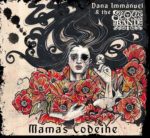 I’m sorry, I really am. I should have written this review about six weeks ago. What makes it even worse (and this wouldn’t ever cloud my judgement) is that the band are good friends of mine. And this EP’s quite a big event; you don’t get a studio release from Dana & the Stolen Band every five minutes and they’re worth waiting for. So, apologies again folks, and I hope this is better late than never. Let me tell you a little bit more about the phenomenon that is Dana Immanuel & the Stolen Band.
I’m sorry, I really am. I should have written this review about six weeks ago. What makes it even worse (and this wouldn’t ever cloud my judgement) is that the band are good friends of mine. And this EP’s quite a big event; you don’t get a studio release from Dana & the Stolen Band every five minutes and they’re worth waiting for. So, apologies again folks, and I hope this is better late than never. Let me tell you a little bit more about the phenomenon that is Dana Immanuel & the Stolen Band.
Easy bit first; where did the Stolen Band name come from? Dana looked out for great musicians and stole them from other bands. She did a bloody good job as well; she created an Appalachian string band with overlays of electric guitar and Eastern European and gypsy jazz fiddle and superb vocal harmonies. Seeing the band live always reminds me of Pennie Smith’s description of The Clash as The Bash Street Kids on a commando raid; but a female version with brighter clothes.
The songs? Thought you’d never ask. They’re all thoroughly road-tested and anyone who follows the band live will recognise them. The opening three songs are in classic Stolen Band style with banjo, guitar and fiddle duelling with harmony and dissonance over the creative and solid rhythm section of cajon and upright bass in support of the vocal. “Mama’s Codeine” isn’t necessarily literal, but it’s about the things we do to deal with the life we live, whatever they are; there’s even a distorted and atonal codeine coda. “Turn Up the Lights” is based loosely on an incident from a book by Cixin Liu, while “WD40 and Duct Tape” is an anthem to two of the three panaceas, the third being ‘Whisky for a broken heart’.
“Shady Grove” (which I originally typed as Shady Gove) is an old Appalachian folk tune which was the first banjo tune Dana learned, and which she played at her best friend’s funeral. Which just leaves the reprise of “Mama’s Codeine” to carry on where the deranged coda of the original finishes.
I would normally finish off a piece like this by saying that, yes, the songs sound fabulous in their studio versions, but you really need to see Dana Immanuel and the Stolen Band live to get the full picture. They are a phenomenal live band, musically and visually and when the current situation is behind us, you should all go out and see them. You won’t regret it.
“Mama’s Codeine” is out now and you can get it right here in physical form or from all the usual online sources.
Is there a video? Of course there is, you’ll see what I mean about the coda:
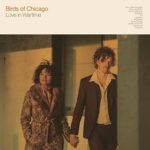 Allison Russell and JT Nero are, collectively, Birds of Chicago. The press release refers to Americana and roots but, even by current standards, that’s stretching the definition. Is that a criticism of this album or Birds of Chicago? Hell, no; the truly great creatives never stand still. Birds of Chicago has evolved into a blend of deep soul, funk, roots and gorgeous melodic pop that defies classification and picks up influences from a dizzying variety of musical styles, blending it into a blissful musical confection. You are getting the message aren’t you? I love this album.
Allison Russell and JT Nero are, collectively, Birds of Chicago. The press release refers to Americana and roots but, even by current standards, that’s stretching the definition. Is that a criticism of this album or Birds of Chicago? Hell, no; the truly great creatives never stand still. Birds of Chicago has evolved into a blend of deep soul, funk, roots and gorgeous melodic pop that defies classification and picks up influences from a dizzying variety of musical styles, blending it into a blissful musical confection. You are getting the message aren’t you? I love this album.
Not one single song that I want to skip and at least two that I want to listen to again and again. I think I’ll concentrate on those two. The title track is a slow, soulful ballad with a moody organ intro and superb use of the impassioned male and female vocals. The “Love in Wartime” title is a metaphor; the theme is the miracle of existence and perseverance, whatever the circumstances. It’s nearly six minutes long, but you just don’t want it to stop; every part of it is so perfect.
“Try” is just over five minutes long and the combination of perfect soulful vocal duet with a steadily building arrangement and a lyric that tackles the difficult subject of loss of motivation and vitality with age and the need to avoid complacency in our relationships and life in general. It’s powerful stuff, musically and lyrically. There is a lot more to the album than the two huge ballads; “Baton Rouge” has a lovely female lead vocal, some French lyrics (of course) and a clarinet solo appearing out of nowhere.
You want me to pick out a few more? Ok, with such a huge mix of influences, it’s pretty much inevitable that you’ll pick out a phrase now and then that evokes something else. “Never Go Back” has a feel of the Stevie Wonder classic “For Once in My Life”, while “Lodestar” evokes The Clash’s “Lost in the Supermarket”. I like to think of it as creative recycling. Don’t even try to impose categories on this album; its heady mix of vocal and instrumental styles is unique.
“Love in Wartime” is released on Friday May 4 on Signature Sounds Recordings.
 Ok, I admit it, we’re a bit late out of the blocks with this one and the reason we’re finally reviewing “Sexploitation” is that Anna-Christina from Lilygun pointed me in the direction of Star Scream; good spot A-C, as ever. Songwriter Adam Lightspeed fronts the band mixing guitar and keyboards with lead vocals and the trio is completed by Natalie Cherry (bass and backing vocals) and Sky London (drums and percussion). With that particular line-up, you probably won’t be too surprised if I tell you that Muse is acknowledged as a major influence. The album is dotted with references to a wide variety of styles and eras, stitched together with such skill, style and unpredictability that the end result is a unique collage.
Ok, I admit it, we’re a bit late out of the blocks with this one and the reason we’re finally reviewing “Sexploitation” is that Anna-Christina from Lilygun pointed me in the direction of Star Scream; good spot A-C, as ever. Songwriter Adam Lightspeed fronts the band mixing guitar and keyboards with lead vocals and the trio is completed by Natalie Cherry (bass and backing vocals) and Sky London (drums and percussion). With that particular line-up, you probably won’t be too surprised if I tell you that Muse is acknowledged as a major influence. The album is dotted with references to a wide variety of styles and eras, stitched together with such skill, style and unpredictability that the end result is a unique collage.
The album opens with the camp theatricality of “Roseblood (Weeping Willow)”, a seedy, sordid tale of exploitation in the skin trade and an arrangement which echoes the Sensational Alex Harvey Band from the early 70s. “Die on the Floor” is another reference to the 70s, fusing a Marc Bolan vocal style with a Sweet stomp and maybe even a bit of early Giorgio Moroder to set the scene for the rest of the album.
When the playing and the dynamics are this good, it’s easy to focus on the music at the expense of the lyrics; if you do, you’re only getting half the picture. Adam is obviously a writer who likes a bit of wordplay and it comes through in some of the titles: the riff-monster “Harlot’s Web”, “Frightmare” and the stomper, “Kill me Kate”. And it doesn’t stop at that; there are some clever turns of phrase in the lyrics as well; how about ‘knight in shining Armani’ from “Frightmare”, and my favourite portmanteau word for the week ‘conspiranoia’, from the hard-riffing glam satire of the current music scene, “Death Shower Scene”. I suspect they ordered in extra kitchen sinks for that one.
Towards the end of the album there are three songs linked by the theme of transgressive or dysfunctional relationships. The trio starts with “Kill me Kate”, progresses through “As the Earth Dies Screaming” with its very effective use of loud-soft dynamics to “Heart of Ice (Falling Out of Love)” which builds by adding instrumental layers for each verse. For once Adam’s voice isn’t on the ragged edge throughout and in the opening verses there’s a hint of Stephen Duffy’s voice (remember him?).
The album’s third and fourth songs also share a theme both poking fun at the faces, the alpha males and females at the forefront of any scene. “Break the Night” is probably the album’s most heavily Muse–influenced song, particularly the vocals and the guitar solo, while “Scenester” pulls influences from everywhere. The song opens like the Clash version of “Brand New Cadillac”, has a breakdown with manic left to right percussion panning, a second breakdown for live audience participation and a guitar solo which would fit perfectly on a Joe Meek record and a crash ending. What more could you want?
The more reflective moments are all towards the end of the album, starting with “When Crimson Lips Spell Murder” which makes good use of dynamics before ending with a delicate string quartet coda. The final big production number, “Obsession”, is built around a sequenced synth riff which loops almost throughout the song, while a piano hook on top adds to the over-the-top Muse feel of the song. The album closes with the stripped-back “The Girl Who Was Death” (just acoustic guitar, strings and some lovely harmonies) and a lead vocal which sounds a lot like Greg Dulli.
“Sexploitation” is an album that grips you because you just don’t know what’s coming next; imagine throwing a lit match into a box of fireworks and you’re about halfway there. The influences are all very transparent but they’re woven so subtly into the rich and contrasting fabric of the songs that they seem to belong there. But it isn’t just about big guitars and thunderous drums; the band use dynamics really effectively and the lyrics are actually worth listening to. In a world of manufactured pop pap and over-hyped ‘next big thing’ acts (did someone mention Royal Blood) this album is a reminder that the real talent is still out there.
Available now from Amazon, iTunes or the band’s website.
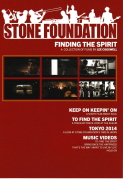 It’s been a busy year for Stone Foundation. The album “To Find the Spirit”, released independently in March 2014, made a significant impact on the indie charts as the band’s live following increased with their own gigs in Europe and Japan and support slots with The Selecter and The Blow Monkeys. With radio support from Craig Charles on 6 Music and endorsement from the Modfather himself, things have been looking pretty good for the band this year. So, how do you keep that momentum going? Well, a few gigs with soul legend and SF collaborator, Nolan Porter, and a DVD as a more permanent memento, would probably do nicely. The gigs have come and gone and the DVD, “Finding the Spirit”, was released on 21 July.
It’s been a busy year for Stone Foundation. The album “To Find the Spirit”, released independently in March 2014, made a significant impact on the indie charts as the band’s live following increased with their own gigs in Europe and Japan and support slots with The Selecter and The Blow Monkeys. With radio support from Craig Charles on 6 Music and endorsement from the Modfather himself, things have been looking pretty good for the band this year. So, how do you keep that momentum going? Well, a few gigs with soul legend and SF collaborator, Nolan Porter, and a DVD as a more permanent memento, would probably do nicely. The gigs have come and gone and the DVD, “Finding the Spirit”, was released on 21 July.
So let’s just rewind a little bit here; Stone Foundation is a bunch of guys from the West Midlands (an area more renowned for heavy metal, to be honest) which formed around the nucleus of Neil Jones (guitar and vocals) and Neil Sheasby (bass and backing vocals) around ten years ago and developed into a classic soul/r’n’b lineup (and by r’n’b I mean Stax and Atlantic, not Jay-Z and Beyonce) with the addition of drums (Philip K Ford), Hammond organ (Ian Arnold), sax (Gary Rollins), trombone (Spencer Hague) and trumpet and latest recruits trumpet (Gareth John) and congas/percussion (Rob Newton). Stone Foundation operates completely outside what’s left of the mainstream music business. On the band’s website, the imagery of the biography is equal parts gang/team and an almost religious evangelism; if you’re thinking early Dexys and The Clash here, then you’re pretty much on the money. Personally, I’m more drawn to the idea of a collective than a gang; the band’s a very tight unit, but they find like-minded contributors outside the unit willing to help promote the manifesto, including writer Paolo Hewitt, Specials’ bass player Horace Panter (who contributed the artwork for “To Find the Spirit”), and videographer Lee Cogswell.
Lee has put together “Finding the Spirit” (described as “a collection of films”) which pulls together various strands of the band’s work over the last few years, combining music videos, a documentary of the 2012 collaboration with Nolan Porter (“Keep On Keepin’ On”), a track-by-track exploration of “To Find the Spirit” with Neil Jones and Neil Sheasby, and a record of Stone Foundation’s 2014 Japanese tour (“Tokyo 2014”).
“Keep On Keepin’ On” mixes interviews with the two Neils and Nolan Porter with live footage from The Musician in Leicester and London’s 100 Club and some lovely studio footage of the recording of Van Morrison’s “Crazy Love” featuring Nolan’s lead vocal; it’s a familiar (but still welcome) story of an artist whose career has been resurrected by the UK Northern Soul scene, but this time with some help from contemporary musicians. The film captures the relationship between Nolan, the band, and their collective audience perfectly, particularly in the footage from The 100 Club.
The track-by-track breakdown of “To Find the Spirit” is enlightening and informative; the interviews with Neil Jones and Neil Sheasby give a genuine insight into the way the album came together while emphasising the part played by fate or the collective spirit. The cameos played by Carleen Anderson and Andy Fairweather-Low were arranged through friends of friends, “Don’t Let the Rain” started with a bass riff and a string sound from Ian Arnold’s new keyboard, and the original inspiration for the album and the song “Child of Wonder” came from a prose piece by Paolo Hewitt. It’s surprising to hear that there were question marks over whether “Crazy Love” had a place on the album; thankfully, common sense prevailed there.
“Tokyo 2014” is a collage of impressions from the brief Stone Foundation Japanese tour earlier this year superimposing quick clips of the band meeting their fans over a live soundtrack which includes a particularly raw version of the Booker T and the MGs classic “Time is Tight” by a Japanese band called The Tramp. The technique of using quick cuts between short video clips conveys the feel of continuous motion while the entire piece emphasises the devotion of the band’s Japanese fans.
The final section of the DVD is a compilation of Lee Cogswell’s videos for the songs “To Find the Spirit”, “Bring Back the Happiness”, “That’s the Way I Want to Live my Life” and “Hold On”. “To Find the Spirit” opens with a quick reference to the Dexys debut album, “Searching for the Young Soul Rebels” as the lead character tunes across the static of a radio dial before leading into an aspirational story which is shot through with visual and audio Stone Foundation references. “Bring Back the Happiness” plays under a father/son reconciliation story featuring Andy Nyman (who featured in the hilarious Channel Four show “Campus” and “Peaky Blinders”) and newcomer Ben Finlay, who was spotted dancing at a Stone Foundation gig. “That’s the Way I Want to Live my Life” is a very clean black and white (and silhouette) video of the individual band members featuring multi-screen effects, and “Hold On” is a fairly straightforward studio piece featuring Andy Fairweather-Low guesting on backing vocals. You can have a look at the videos here.
By any standards, this is a very high quality piece of work; if you take into account the fact that this venture has no music business backing, then it’s absolutely exceptional. Lee Cogswell has worked across a variety of styles, including documentary, interviews, live footage, reportage and music video to produce a cohesive piece of work which enhances his own reputation while documenting the rise of a band with an absolute commitment to fulfilling its own agenda. It’s more than a just a souvenir, it’s a lovingly-crafted insight into the workings of a group of people who are making music for all the right reasons. The band is also appearing in a special session recorded for the Craig Charles funk and soul show on BBC 6 Music this Saturday (August 9).
This DVD is worth buying for its musical and visual quality, but also because the people responsible for the creative input actually see some financial reward for their efforts.
Out now. Available from Lee Cogswell.
So it’s time to move on to the second half of the seventies and the early eighties and we start off with the P-word.
AM – How did you react when punk came along then?
PB – Loved it; I actually loved it and weirdly I wanted it to do what it wanted to do because up to that point my heroes were not punk at all and the very antithesis of punk. I wanted it, because I would have been about seventeen then, leaving school, and just starting to think about playing music in pubs and got a band together; well, actually, I got a duet together with Martin Gore (yes, that Martin Gore) and we were trying to write songs. He liked, I don’t know who he liked, I think it was Simon and Garfunkel at the time and he did like Sparks and David Bowie. I liked David Bowie but I wasn’t sure, I didn’t trust him which now, I think, was probably wrong, but I didn’t get the idea that superficial and chameleon-like was his theme. At the time I thought ‘I don’t believe he really means this’ and at that time it had to mean it and that meant a lot to me and I was probably wrong and Gore was probably way ahead of me on that. So we wrote songs which I tried to make melodic and soulful and he wanted to make strange and weird. I taught him how to play guitar and he was a better guitar player than he is, well, what he’s ended up as. We were writing some interesting songs at the time and we went out as this strange band and the punk happened, halfway through this band.
I had hair like Marc Bolan at the time and he had a bubble-cut but we found ourselves on these punk bills. I’d started writing a few songs as well, so I found myself as a solo person on these punk bills for no reason whatsoever because I had nothing to do with punk musically but I liked the fact you could play somewhere and there was energy there and I started listening to other people who were playing and I thought I’ll have a listen to this, so I went along to see some bands. I saw The Buzzcocks, The Ramones and The Talking Heads when they first came over, I saw The Clash once and there was a big fight so I didn’t hear much of The Clash, but that wasn’t the point in a way. I tended to like a what went on afterwards in the post-punk era; I got really well into that because there seemed to be room for bands like Television and The Fall with some of their lyrics which, at that point, were suddenly taking over for me and I went from trying to write songs like James Taylor with three words in them to two chords and “War and Peace” over the top of them; “Ulysses” or something like that, but then there were bands that that was feeding into at the time like The Fall. I certainly got heavily into The Fall and the more experimental bands but I would still listen to “The Modern Dance” by Pere Ubu and then go home and listen to “Mud Slide Slim and the Blue Horizon” by James Taylor because I think that’s what it’s about; they’re not dissimilar in the sense that the person who’s responsible for the music does what he wants it to do. There’s too many categories, in a way.
AM – I know Television, “Marquee Moon”, everybody claims now that it’s always been their favourite album and at the time…
PB – They’re fucking lying; I tried to get everyone into that and a couple of people got it, but for once the rabid NME press was right about this.
AM – For me it’s still one that I’m happy to get the vinyl copy out and stick it on the turntable.
PB – It is actually an album I can listen to at any time and that’s a rare thing. Sometimes, even your favourite albums you think ‘I’m not in the mood for that’, but I can be depressed, I can be happy, I can be whatever, but when Television comes on, that’s it.
AM – So, that was punk, what about what came after that.
PB – Punk was exciting and I was involved in the energy of it; everywhere you went there were gigs. I sounded like Leonard Cohen at that time but anything went and that was the beauty of it. I wore flares and had long hair at the punk gigs I did and it was, sort of, ok. You’d get comments, but that was sort of the point; wait until Dexys Midnight Runners sing about ‘you’re so anti-fashion, wear flares”. You could do anything you liked, it was sort of Dadaist spirit. It was very early on when the fashion thing kicked in, the Kings Road punks, and it was weird because I felt like I’d transcended that because I hadn’t changed. I didn’t even cut my hair so I was like David Crosby amongst the punks.
AM – So presumably when the synthesisers kicked in that wouldn’t really have been your thing.
PB – When the post-punk thing happened, I used to like some of the bands that became known as Krautrock, Can, Neu and the newer ones as well, Deutsch Amerikanische Freundschaft and Einsturzende Neubauten who were pure noise and distortion and the English versions of that like Cabaret Voltaire; I loved all of that. I thought there’s a synth thing going on and Martin got into it, so he buggered off and did Depeche Mode. Suddenly it turned into this really twee pop with no substance. I don’t hate pop music but I thought, with everything he knew, and the stuff he liked, I thought he would have gone towards Throbbing Gristle rather than this thing that happened, which seemed like it was going to be over in five minutes. For all I know he’s now a multi-millionaire and I’m sitting in a pub in Leigh.
AM – It’s a general thing that innovations like that come along, people make really good music and then somebody grabs bits of it for the mainstream and just dilutes it.
PB – That’s always happened. Bob Dylan wouldn’t have been anywhere if it wasn’t for The Byrds; fabulous as that was, I’d rather hear Dylan. I’m probably alone in the world in preferring “All Along the Watchtower” by Bob Dylan to the Hendrix version, even though I like Jimi Hendrix. I’m alone, even Bob Dylan said it’s a better version.
AM – Dylan’s songs have been interpreted by a lot of people; are they better versions or are they different versions?
PB – They’re different versions. Sometimes you can say they’re better versions but the thing I always try to get away from is ‘Dylan’s a fabulous songwriter and an icon of the twentieth century but he can’t sing’. So that means that if Judy Collins or some such does a version of “Idiot Wind”, it will be better, de facto, because she can sing. I could not disagree with anything, outside of UKIP, more vehemently than that. Bob Dylan and Sinatra are probably the best vocal stylists of this millennium. The reason I say that is because you try to play a Bob Dylan song and sing it and not sing a bit like Bob Dylan, not phrase it like him. The same with Sinatra, once you’ve heard “You Make me Feel So Young”, you try and sing that differently. Put your own slant on that; you can’t.
AM – I play and sing badly but I try Dylan songs like “I Shall be Released” and it’s always going to sound like Dylan.
PB – The Band did that; they’ve got some great singers in that band, and it sounded like Dylan; they couldn’t change the phrasing at all. You can sing it in a bland way or you can over-sing it; my worst nightmare is that I’ll wake up and “Positively Fourth Street” is covered by Mariah Carey. She would do it and you can guarantee you would have a queue of people saying ‘Oh, at last this song has been realised by a true singer’, but I would hunt her down and you’d see me on the Six O’Clock News if that happened.


